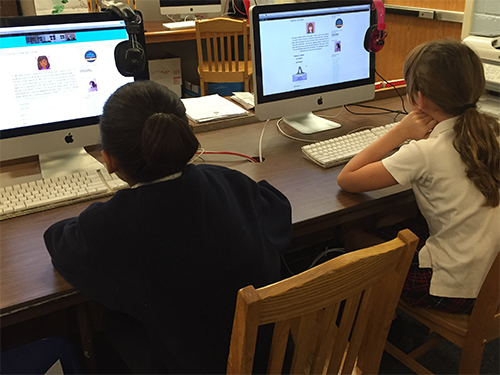Chapter 2: Getting Started with Digital Writing in My Classroom
2.1 Roadblocks
What I envisioned took a great deal of time to achieve. Since I had just changed grade levels my head was spinning daily with planning, assessments, and fostering a community of learners. I would wake up in the morning and say, “Today is the day!,” only to discover I was wrestling with anxiety as I questioned myself. What tools should I use? What technology devices should I use? How do I model internet safety for my students? How do I assure parents their children are safe online? How can I feel more prepared? These questions would consume my thinking and I would decide today wasn’t the day to start our digital writing journey. I needed to find a starting point and asked myself, “Where can I get help?” We had voices to be heard. We had learning to be shared. We had thoughts in response to others thinking and writing.
I turned to Twitter for help with my questions because people are so willing to share their thinking and offer suggestions. I specially reached out to @KristinZiemke because I had just finished reading Connecting Comprehension and Technology: Adapt and Extend Toolkit Practices, a book she co-authored. Kristin embeds technology in her daily work with students and I thought she would have helpful suggestions for my questions. One particular piece of our conversation created a sudden enlightenment and inspiration.
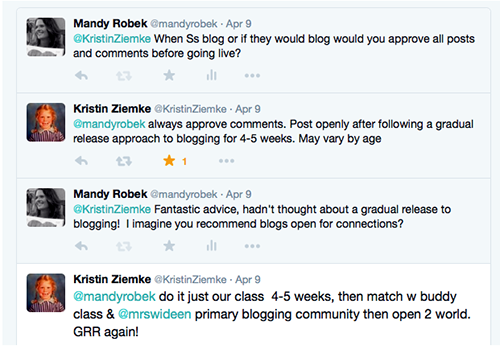
Tweets are limited to 140 characters but I felt this little amount of text gave me a starting point to move forward and get my students engaged with their own blogs. Kristin’s responses were just the nudge I needed to look at what we had been doing in my classroom together as digital writers. When school started, I modeled writing about our learning and for the first week of school I actually wrote the posts for our Class Blog page on our website. I began my modeling by thinking aloud about our school day for possible writing ideas. I would highlight something new we did for the day which became the title and then brainstormed some reasons why I wanted to share this part of our day. These reasons would guide my writing to include some details specific to the topic. Tiny Topics was one of those first pieces I wrote. I wanted to model how our sharing could be informative for our audience since Tiny Topic notebooks was something new to the students and their parents.
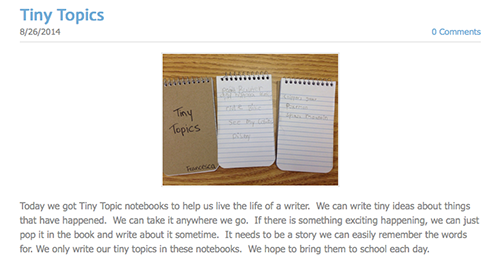
My students were eager to start collaborating and sharing the writing for their class blog page. Just as we had when I was modeling the writing, we would gather at the end of the day and project our website on the Smart board for everyone to see to contribute ideas to our writing.
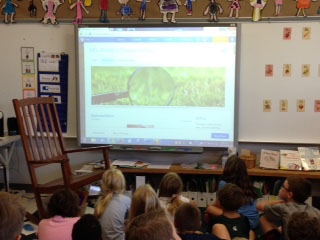 When we write class blog posts together, I sit at the keyboard typing, while students take turns sharing their thoughts with each other. We begin by thinking about our school day for a topic of interest to share. After deciding on a topic, we take a moment to give everyone some quiet thinking time. Next, we begin taking turns sharing what we would like our readers to know about our topic. Some ideas we are able to use just as they are. For example, in our piece about Writing Partners; one student shared, ”Yesterday we got writing partners.” This statement states the main idea of our post, so we leave it as is. Some ideas I gently guide, combining them to make our thinking more complete or make the sentence more sophisticated. An example of this would be when one student added, “We can ask our writing partners for a conference,” while another added, “We meet at the coffee table.” These two sentences became,; “We can ask our writing partners to have a conference with us at the coffee table.” Sometimes I need to probe their thinking with a guiding question to include more details. I may ask questions like, “Why do we meet with writing partners?” or “How can writing partners help us?” It was interesting to observe how quickly my students were able to help with revising and editing our pieces. Since the pieces are projected on the SmartBoard, they help me with typing mistakes, punctuation errors, and capitalization. They offer suggestions for moving the text around for a clearer organization or order of events. This is our final piece titled, Writing Partners.
When we write class blog posts together, I sit at the keyboard typing, while students take turns sharing their thoughts with each other. We begin by thinking about our school day for a topic of interest to share. After deciding on a topic, we take a moment to give everyone some quiet thinking time. Next, we begin taking turns sharing what we would like our readers to know about our topic. Some ideas we are able to use just as they are. For example, in our piece about Writing Partners; one student shared, ”Yesterday we got writing partners.” This statement states the main idea of our post, so we leave it as is. Some ideas I gently guide, combining them to make our thinking more complete or make the sentence more sophisticated. An example of this would be when one student added, “We can ask our writing partners for a conference,” while another added, “We meet at the coffee table.” These two sentences became,; “We can ask our writing partners to have a conference with us at the coffee table.” Sometimes I need to probe their thinking with a guiding question to include more details. I may ask questions like, “Why do we meet with writing partners?” or “How can writing partners help us?” It was interesting to observe how quickly my students were able to help with revising and editing our pieces. Since the pieces are projected on the SmartBoard, they help me with typing mistakes, punctuation errors, and capitalization. They offer suggestions for moving the text around for a clearer organization or order of events. This is our final piece titled, Writing Partners.
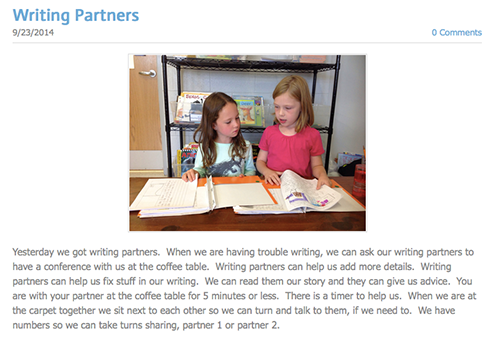
I soon realized we had already taken the first steps on our journey of becoming digital writers. We had been writing digitally together since school started. We had been co-constructing our writing in an online space. Making this realization alleviated my anxiety from earlier and gave me the confidence to address the questions I was wrestling with.
